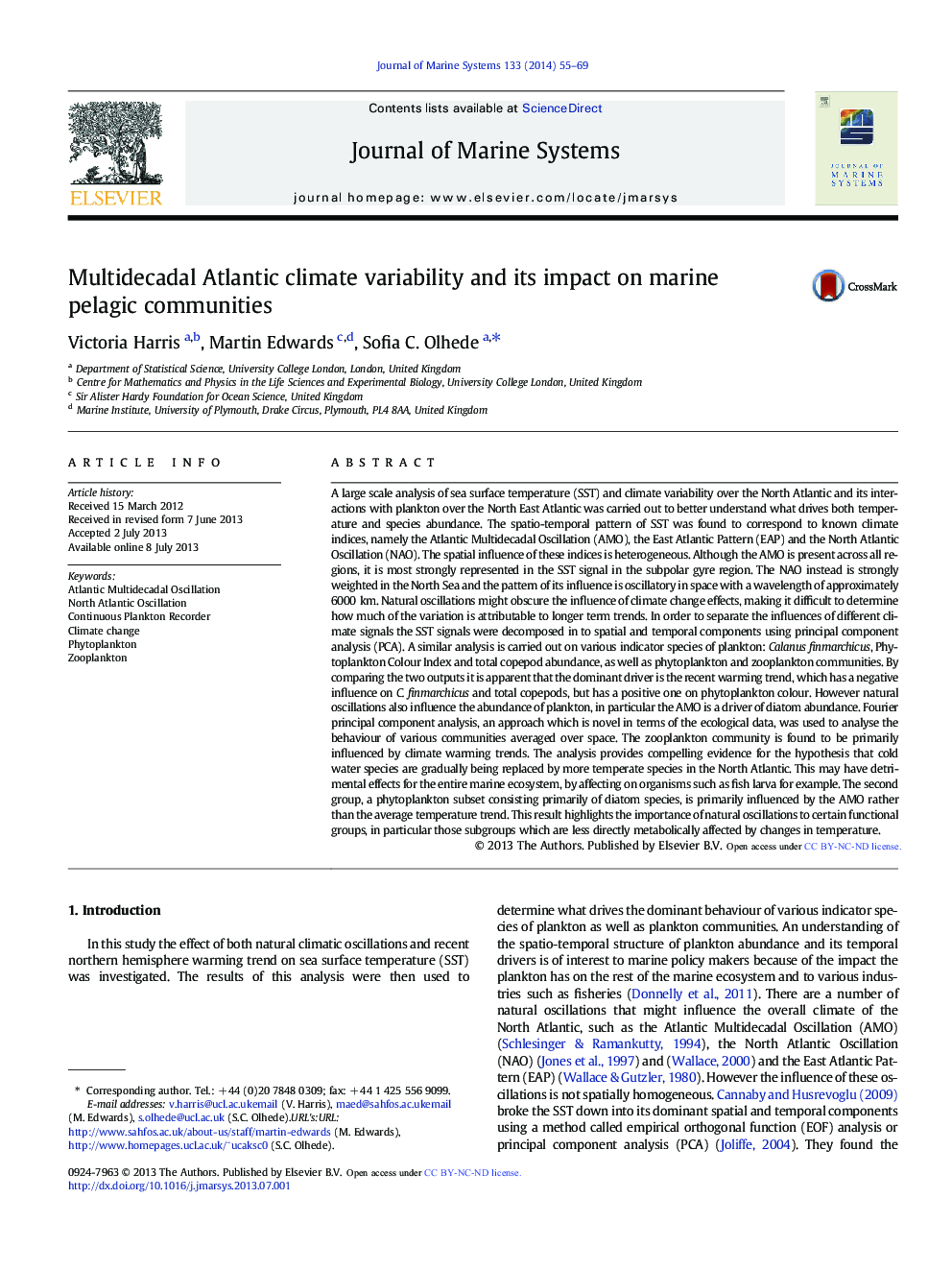| کد مقاله | کد نشریه | سال انتشار | مقاله انگلیسی | نسخه تمام متن |
|---|---|---|---|---|
| 6387003 | 1627296 | 2014 | 15 صفحه PDF | دانلود رایگان |
- The heterogeneous influence of climate oscillations on sea surface temperature can affect the local behaviour of marine pelagic communities.
- For the Diatom subgroup the main driver is the AMO and it is a secondary driver for zooplankton species.
- The community analysis in this paper allows a better understanding of how the plankton behaves as functional groups.
- The influence of the NHT warming trend, the AMO and the NAO on plankton abundance also varies across space and species.
- Temperature has a positive impact on abundance for certain species and a negative influence on others.
A large scale analysis of sea surface temperature (SST) and climate variability over the North Atlantic and its interactions with plankton over the North East Atlantic was carried out to better understand what drives both temperature and species abundance. The spatio-temporal pattern of SST was found to correspond to known climate indices, namely the Atlantic Multidecadal Oscillation (AMO), the East Atlantic Pattern (EAP) and the North Atlantic Oscillation (NAO). The spatial influence of these indices is heterogeneous. Although the AMO is present across all regions, it is most strongly represented in the SST signal in the subpolar gyre region. The NAO instead is strongly weighted in the North Sea and the pattern of its influence is oscillatory in space with a wavelength of approximately 6000Â km. Natural oscillations might obscure the influence of climate change effects, making it difficult to determine how much of the variation is attributable to longer term trends. In order to separate the influences of different climate signals the SST signals were decomposed in to spatial and temporal components using principal component analysis (PCA). A similar analysis is carried out on various indicator species of plankton: Calanus finmarchicus, Phytoplankton Colour Index and total copepod abundance, as well as phytoplankton and zooplankton communities. By comparing the two outputs it is apparent that the dominant driver is the recent warming trend, which has a negative influence on C. finmarchicus and total copepods, but has a positive one on phytoplankton colour. However natural oscillations also influence the abundance of plankton, in particular the AMO is a driver of diatom abundance. Fourier principal component analysis, an approach which is novel in terms of the ecological data, was used to analyse the behaviour of various communities averaged over space. The zooplankton community is found to be primarily influenced by climate warming trends. The analysis provides compelling evidence for the hypothesis that cold water species are gradually being replaced by more temperate species in the North Atlantic. This may have detrimental effects for the entire marine ecosystem, by affecting on organisms such as fish larva for example. The second group, a phytoplankton subset consisting primarily of diatom species, is primarily influenced by the AMO rather than the average temperature trend. This result highlights the importance of natural oscillations to certain functional groups, in particular those subgroups which are less directly metabolically affected by changes in temperature.
Journal: Journal of Marine Systems - Volume 133, May 2014, Pages 55-69
